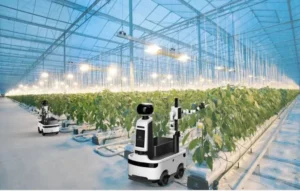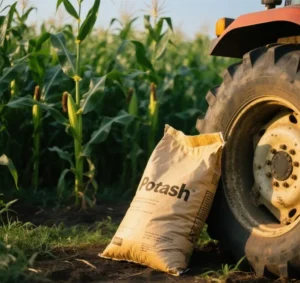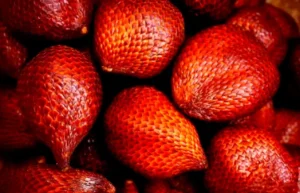Although chemical fertilizers still feed the world, their diminishing returns and environmental consequences—such as eutrophication, soil acidification, and nitrous oxide emissions—are prompting growers and policymakers to seek “more with less” solutions. One of the fastest-growing areas is the commercial use of microbial secondary metabolites (MSMs), the small, bioactive molecules exuded by bacteria, actinomycetes, and fungi once their active growth phase slows. These compounds are nature’s own agrochemicals, including antibiotics, siderophores, organic acids, phytohormones, volatiles, and signaling lipids, and plants and soil communities have evolved with them for 400 million years. The challenge now is to domesticate this chemistry on a large scale without repeating the “one-size-fits-all” mistakes of the first Green Revolution.
1. What makes MSMs different from classical biofertilizers?
Traditional inoculants are valued for their living cells (e.g., Rhizobium for nitrogen fixation). MSM-based products, by contrast, deliver the metabolite itself or a microbe engineered to overproduce it, so efficacy is no longer tied to long-term colonization. This distinction matters because it decouples performance from the vagaries of native microbiota, drought, or antibiotic pressure. It also opens the door to “bio-chemical” blends, in which a single metabolite is tank-mixed with mineral fertilizers, much like an adjuvant.
Agronomic modes of action validated in the last decade
- Nutrient acquisition
- Organic acids (gluconic, oxalic, and 2-ketogluconic) solubilize bound phosphorus (P) and micronutrients. Repeated field trials in Brazil, India, and the U.S. Corn Belt show 30–50% higher resin-extractable phosphorus within one season.
- Siderophores (e.g., bacillibactin and pyoverdine) chelate Fe³⁺ and increase iron density in wheat endosperm by 15%, providing a hidden benefit to human nutrition.
- Stress mitigation
- Surfactin and related lipopeptides from Bacillus spp. reduce the surface tension of water droplets on leaves, which delays wilting under heat stress. In Texas, cotton lint yield increased by 180 kg/ha under canopy temperatures of 45 °C.
- 2,4-Diacetylphloroglucinol (2,4-DAPG) primes systemic immunity (ISR) against biotrophic and necrotrophic pathogens, reducing the need for fungicide sprays by one-third in California strawberries.
- Soil structural benefits:
- γ-Polyglutamic acid (γ-PGA) acts as a biodegradable “micro-polyacrylate,” increasing water-stable aggregates by 20% and reducing irrigation demand by 8–12% in greenhouse tomatoes.
Commercial product classes already on the market
| Category | Flagship organisms | Typical metabolites | Grower-facing brands (selected) |
| Bacterial biostimulants | Bacillus velezensis, Pseudomonas fluorescens | Surfactin, fengycin, 2,4-DAPG | Serifel®, Howler®, Rhizovital® |
| Actinomycete biocontrol | Streptomyces lydicus | Actinomycin X₂, streptimidone | Actinovate® |
| Fungal inoculants | Trichoderma asperellum, Aspergillus niger | Harzianolide, peptaibols, gluconic a |
Importantly, many new products are “metabolite-enriched” rather than pure cultures. EU and U.S. regulators now allow the registration of “dead” or “dormant” biomass as long as the active ingredient is chemically defined and undergoes toxicological testing.
Formulation and Delivery: The Make-or-Break Step
MSMs are ppm-level molecules, so keeping them bioavailable in a soil full of sorption sites for 4–12 weeks is difficult. Three technological fixes are emerging:
- Oil-in-water nanoemulsions (droplets <200 nm) that protect lipopeptides from protease degradation. Shelf life at 25 °C doubles to 18 months.
- Layered double hydroxide (LDH) “microclays” that slowly release anions, such as gluconate, providing a 30-day phosphorus-solubilizing window.
- CRISPR-edited over-producers (e.g., B. subtilis ΔabrB mutants) that secrete 5-7 times more surfactin. This allows for lower application rates and cost parity with synthetic chelates.
Field variability: Can we model it?
Multi-environment trials (MET) across 42 sites in the U.S. Midwest show that the efficacy of microbial soil amendments (MSA) on corn yield correlates positively with soil organic matter (SOM) greater than 3% and negatively with Bray-1 phosphorus (P) greater than 40 ppm. Integrating these two parameters into a decision-support tool increased the probability of ROI > 2:1 from 55% to 78%. Similar predictive frameworks are being developed for salinity, temperature, and soil texture, mirroring the precision ag algorithms long used for N-rate calculators.
Regulatory and Consumer Tailwinds
The EU’s Farm-to-Fork target of reducing pesticides by 50% by 2030 has accelerated the approval of biopesticides based on microbial substances (MSM). The average review time fell from 3.5 years in 2016 to 2.2 years in 2021.
The U.S. EPA’s new “Plant Regulator & Biostimulant” category (final rule expected in 2025) will exempt many MSM metabolites from residue tolerance requirements, reducing registration costs by approximately $3 million per active ingredient. – Retailers such as Walmart and Tesco now score fresh produce on “synthetic-input reduction”; growers using verified MSM programs receive price premiums of 3–5%.
Retailers such as Walmart and Tesco now evaluate fresh produce based on “synthetic-input reduction”; growers who use verified MSM programs receive price premiums of 3–5%.
Remaining bottlenecks and how the community is tackling them
| Bottleneck | Latest science/industry response |
| Batch-to-batch inconsistency | qPCR/LC-MS dual QA: ensure ≥ 90 % of stated CFU and metabolite titer; ISO 17025 standards under ballot. |
| High cost of purification | Switch to whole-broth or “cell-free fermentate” products; membrane ultrafiltration cuts CAPEX 60 %. |
| Knowledge gap among advisers | Extension curricula co-developed by Land-Grant universities and startups; >1,000 certified “biostimulant specialists” in U.S. by 2024. |
| Ecological unknowns | Global “MSM atlas” project (750 soils, 3 continents) to map natural background levels and avoid overdosing keystone taxa. |
Looking ahead: Five-year horizon
- Synthetic-ecology pipelines will combine multiple metabolic pathways into a single “chassis” microbe. For example, a Pseudomonas strain could simultaneously secrete 2,4-DAPG, gluconic acid, and the plant hormone trans-zeatin.
- On-farm fermenters (“brew-your-own-bioactives”) with single-use 50-liter bioreactor bags could reduce the cost of goods to below $1 per hectare for high-value metabolites. – Retailers such as Walmart and Tesco now score fresh produce on “synthetic-input reduction”; growers using verified MSM programs receive price premiums of 3–5%.
- Integration with cover crop programs—e.g., fall-planted hairy vetch inoculated with an MSM-producing Streptomyces—will transform living mulches into metabolite factories, combining carbon sequestration with reduced inputs.
Conclusion
Microbial secondary metabolites are transitioning from academic curiosities to mainstream agricultural inputs because they provide quantifiable benefits regarding nutrients, stress, and disease while aligning with existing spray schedules and regulatory frameworks. However, their ultimate impact hinges on rigorous field analytics, transparent product quality, and grower education—lessons learned the hard way during the first wave of biologicals. If these criteria are met, MSMs could become the “active ingredients” of 21st-century sustainable cropping systems, complementing—rather than replacing—the chemical fertilizers and pesticides that underwrite global food security.









